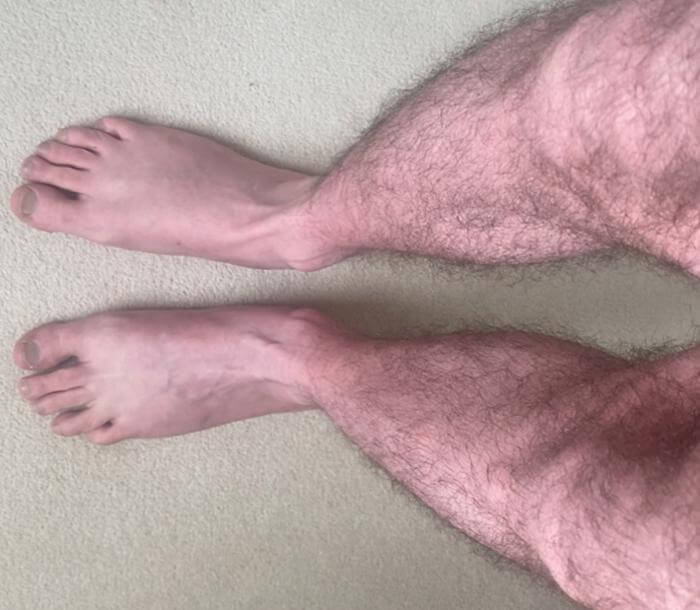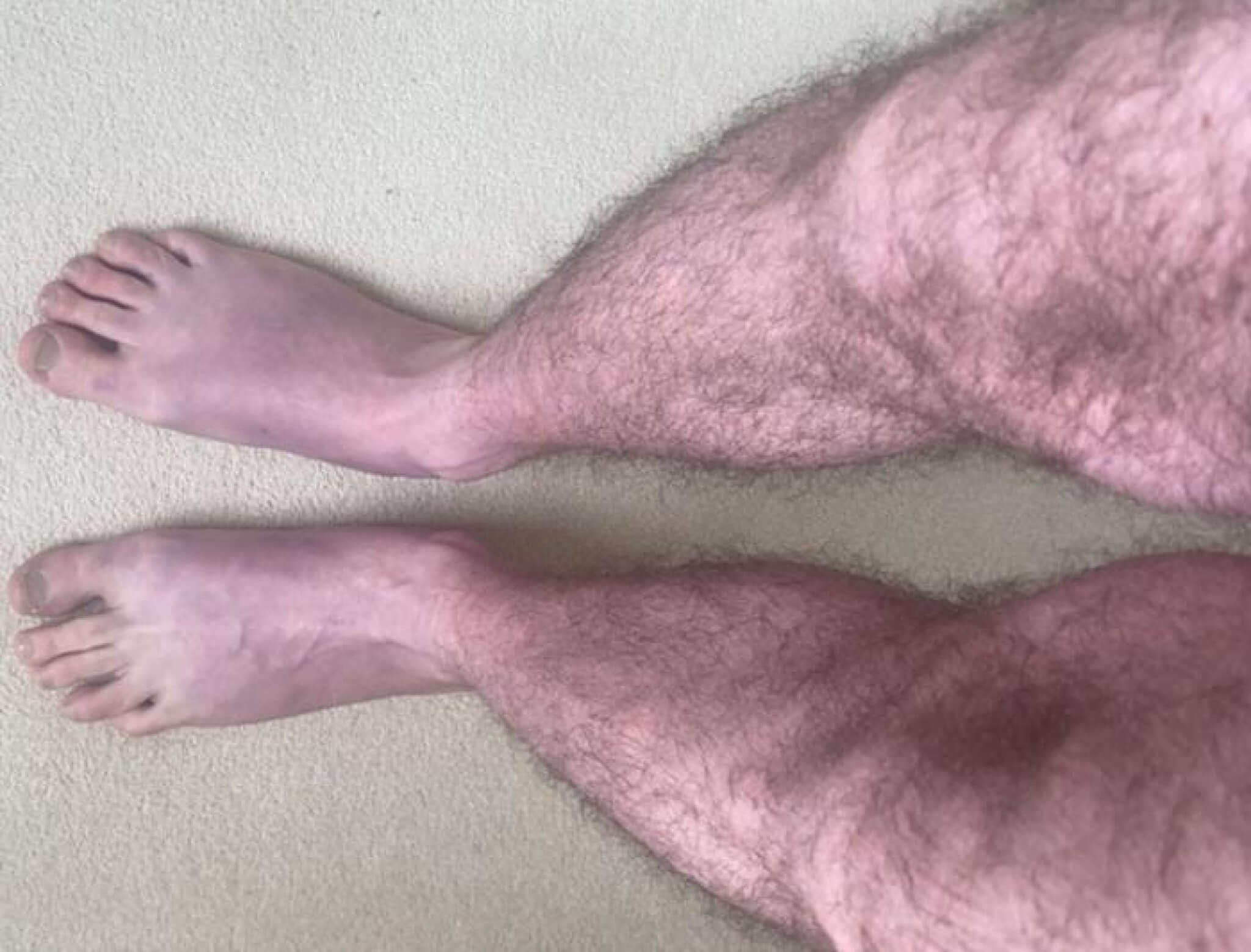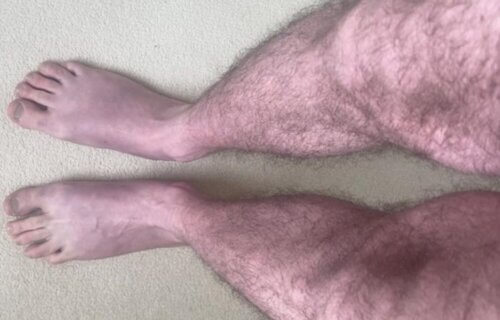LEEDS, United Kingdom — If your legs start turning blue after just a few minutes of standing, it might be a sign of long COVID, a new study warns. The alert comes after doctors examined a long COVID patient whose legs turned blue within 10 minutes of standing. Researchers in the United Kingdom say this case underscores the urgent need to raise awareness about “blue legs” among those still experiencing lingering symptoms of COVID-19 long after their infection.
The study centers on a 33-year-old British man who developed acrocyanosis — a condition characterized by venous pooling of blood in the legs. Dr. Manoj Sivan from the University of Leeds described the case, noting that within a minute of standing, the patient’s legs began to redden and steadily turned bluer. The man’s veins also became more pronounced.
After 10 minutes, the blue hue was significantly “pronounced,” and the patient reported feeling a heavy, itchy sensation in his legs. The man’s natural skin tone returned just two minutes after he sat down.
The 33-year-old indicated that this discoloration began after he contracted COVID. Doctors then diagnosed him with postural orthostatic tachycardia syndrome (POTS), a disorder that leads to an abnormal heart rate increase after standing.

“This was a striking case of acrocyanosis in a patient who had not experienced it before his COVID-19 infection,” says Dr. Sivan, Associate Clinical Professor and Honorary Consultant in Rehabilitation Medicine at the University of Leeds’ School of Medicine, in a media release.
“Patients experiencing this may not be aware that it can be a symptom of long COVID and dysautonomia and may feel concerned about what they are seeing. Similarly, clinicians may not be aware of the link between acrocyanosis and long COVID,” Dr. Sivan continues. “We need to ensure that there is more awareness of dysautonomia in long COVID so that clinicians have the tools they need to manage patients appropriately.”

Long COVID impacts multiple body systems, producing diverse symptoms that hinder patients’ daily activities. Dr. Sivan highlighted that the disease also affects the autonomic nervous system, which controls blood pressure and heart rate. Acrocyanosis has been observed in children suffering from dysautonomia, a frequent symptom of post-viral syndromes.
Dr. Sivan’s team has previously shown that dysautonomia and POTS are common in long COVID patients. Additionally, dysautonomia is prevalent in other chronic conditions like Fibromyalgia and Myalgic Encephalomyelitis (commonly referred to as Chronic Fatigue Syndrome or ME).
“We need more awareness about dysautonomia in long term conditions; more effective assessment and management approaches, and further research into the syndrome. This will enable both patients and clinicians to better manage these conditions,” Dr. Sivan concludes.
South West News Service writer Jim Leffman contributed to this report.
The study is published in the journal The Lancet.
You might also be interested in:
- Long COVID patients still dealing with brain function issues over 2 years later
- Long COVID symptoms debunked: Scientists find only 7 persistent effects from infections, not 200
- Diabetes drug metformin slashes risk of developing long COVID by 40%


Photoshop is awesome, amirite?